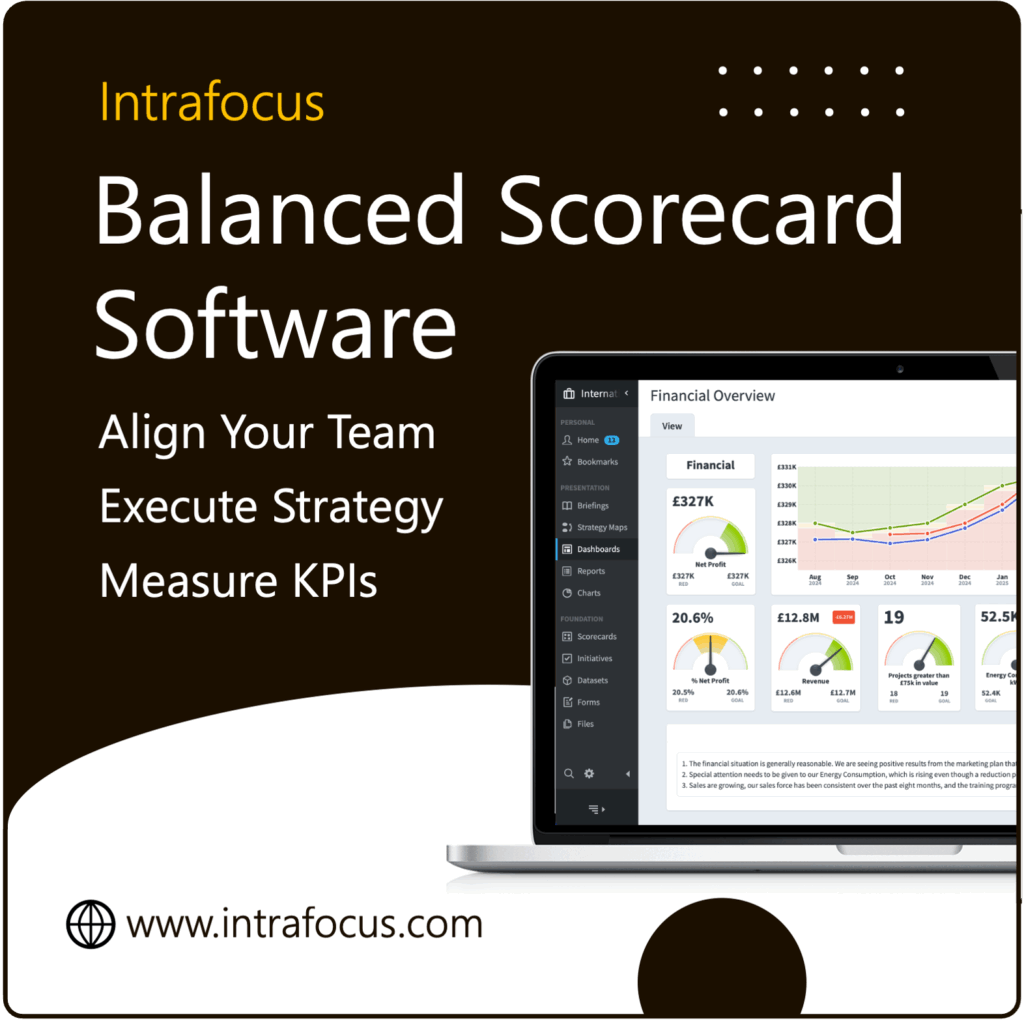Understanding KPI targets and thresholds
Understanding KPI Targets – This week we continue our article series on Key Performance Indicators: the measures by which an organisation’s progress towards strategic goals and objectives are measured, typically using a business performance management framework such as the Balanced Scorecard.
We will now turn our attention to the topic of targets and thresholds. KPIs in themselves are largely intuitive concepts to most managers who will be used to local target setting. With KPIs, sound target setting is crucial, as the set will be measured across the entire organisation to track overall performance.
Why KPI targets are so important
The correct usage and implementation of KPIs ensures that organisational-wide strategic progress remains on track and flags up any issues in a timely fashion for rapid management decision-making. There is a difference between targets themselves and thresholds to remember. The latter defines the allowable tolerance level that the objective KPI measure can pass within before a concern flag is raised for attention. A KPI needs a threshold to be well managed and to derive value from its objective, time-bound nature.
Why targets need to be realistic
The fact is that targets can either be highly motivational or deeply un-motivational. Imagine a team that views its KPIs as being achievable through hard, smart work and collective effort. Those KPIs suddenly become worthy of aiming for – especially when linked to an incentive scheme such as performance-related pay. But conversely, imagine a team that views its KPIs as being impossible to achieve. There simply is no incentive to try when failure seems to be inevitable, and where there will be no personal pay-off. Performance and morale will rapidly decline as a result.
The impact of unrealistic targets
Again, this situation is intuitive. Picture a department spending a focused period of time diligently developing a localised strategy that supports the broader organisational strategy and which ensures that deliverable business objectives can be achieved by that department. This team will be motivated, engaged and ready to begin. Then imagine that the CEO’s response is that the ‘numbers must be doubled’. Instantly, the careful work that went into planning and setting the right target tolerance level for the correct degree of stretch with the ability to achieve is wasted.
The department will feel as though their input and local insight is being rubbished. They will instantly know that the new doubled target is unachievable and have no incentive to try, recognising that their work so far has been pointless. Suddenly that department isn’t only planning to forget the KPI and fail to go ‘above and beyond’ to achieve it, but these employees are disengaged. Great talent may begin to depart the organisation and head to a rival company where efforts are recognised and valued. This example is all too common and demonstrates how a seemingly small action can have powerful and undesirable knock-on effects with serious ramifications for the business in the longer-term.
Ensuring that conditions are correct for KPIs
Organisations will naturally search for the correct framework or formula to calculate appropriate KPIs. But it is first prudent to ensure that the internal conditions are suitable for any kind of KPI to be successful. A team will only be encouraged to pursue the achievement of a KPI if they believe in it, are bought into it and believe that they will be supported in attaining it. This is known as the ‘Three Human Conditions’ [1]. In summary:
The right support
Employees need to feel that their managers will provide the resources, encouragement, budget, time and other general aspects of support required to deliver targets.
Buy-in
Teams must feel that they have ownership of their target. They must feel that they have been involved in selecting an appropriate target and selecting its measure. Only then will they know that it is achievable.
Belief
Similarly, the team must believe that they can achieve the target, through their skills, performance, knowledge and/ or ownership of the underlying system or process that needs to be improved for improved outcomes.
Stretch or achievable targets?
Many organisations automatically assume that all KPIs should be stretch targets – meaning that they are only achievable through radical change or innovation. This requires a very high degree or buy-in, knowledge, support and belief. All three aspects must be firmly in place before any stretch element is factored in – or it will fail entirely. There are plenty of cases for setting an achievable and predictable target. The team will have a powerful belief in their ability to achieve, usually based on past effort. They will still need a high sense of buy-in or leadership support, however, to make it happen, meaning that two out of three conditions still need to be in place.
An argument for no targets at all?
If a team doesn’t buy into a target or doesn’t believe that they can effect change, no degree of management support will make enough difference. Similarly, a team with buy-in but no support or self-belief will be unable to deliver. Belief in the ability to achieve will also yield no results if the team doesn’t care enough to deliver change, and feels that no support is present. In conclusion, if only one condition is present, then there is a strong argument for pausing on targets entirely until the underlying conditions can be assessed and changed.
How a good software product can help
KPI tracking across an entire organisation can be onerous and complex, requiring intensive and skilled resource if attempted manually. A tracking system such as QuickScore works to support the Balanced Scorecard methodology and simplifies the process of KPI tracking and management. It adds the benefits of automation and excellent flexibility, allowing the business to create rich content dashboards which are viewable in real-time, and which allow data mining to enhance management decision making. Even better, this software is hosted in the cloud for affordable license-based purchasing and automatic software updating. To find out more, visit our Balanced Scorecard Software page.
Source: [1] How Learning Works, authors Ambrose, Bridges, DiPietro, Lovett and Norman



